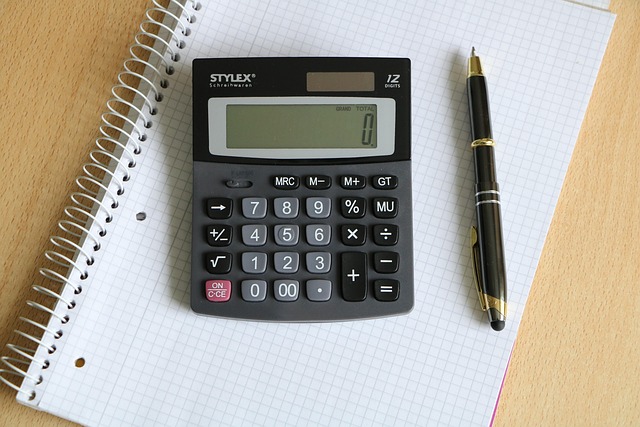Choosing the Best Crypto Price Prediction Calculator: Features, Methods & Top Picks
Author: Jameson Richman Expert
Published On: 2025-10-28
Prepared by Jameson Richman and our team of experts with over a decade of experience in cryptocurrency and digital asset analysis. Learn more about us.
The best crypto price prediction calculator helps traders, investors, and analysts turn raw market data into actionable price forecasts. In this article you'll learn what makes a prediction calculator reliable, which models and data sources to prioritize, how to validate outputs, and practical steps to integrate a calculator into your trading workflow — whether you're day trading or building a long-term portfolio. We compare methodologies (statistical, machine learning, on-chain), give example calculations, provide a checklist for selection, and point to trusted resources and tools to get started.

Why a good crypto price prediction calculator matters
Cryptocurrency markets are volatile, 24/7, and driven by a mix of macro events, on-chain metrics, liquidity, and sentiment. A high-quality prediction calculator does three things well:
- Aggregates and cleans diverse data (price, volume, order books, on-chain metrics, social sentiment).
- Applies robust models and backtesting to generate probabilistic forecasts, not false certainty.
- Presents results with transparency, confidence intervals, and scenario analysis to guide decisions.
Used correctly, the best crypto price prediction calculator reduces noise, clarifies risk, and helps you design better entries, exits, and position sizes.
What is a crypto price prediction calculator?
At its core, a crypto price prediction calculator is a system or tool that takes market inputs and runs algorithms to output expected future price levels or probability distributions. Inputs typically include historical prices, volatility, trading volume, network metrics (e.g., active addresses, gas fees), market depth, derivative funding rates, and alternative data like social media sentiment or Google Trends.
Outputs vary: point estimates (e.g., predicted price in 7 days), distributions (e.g., 95% confidence interval), scenario projections (bull, base, bear), or trade signals (buy/sell/hold) with recommended position sizes.
Core features of the best crypto price prediction calculator
When evaluating calculators, look for these essential features:
- Data breadth and freshness: Real-time (or near real-time) price and order-book data, historical time series, and on-chain signals.
- Multiple model types: Access to statistical, simulation, and machine learning models so you can compare outputs.
- Backtesting and walk-forward validation: Past performance metrics, confusion matrices, and loss curves to verify model claims.
- Explainability: Clear model descriptions, feature importance, and visualizations showing why a forecast looks the way it does.
- Scenario analysis and Monte Carlo simulations: Allows stress-testing under different volatility and drift assumptions.
- Confidence intervals and probability statements: Avoids single-number predictions by quantifying uncertainty.
- APIs and export: Integration to export predictions for trading bots, spreadsheets, or dashboards.
- Security and privacy: Encrypted API keys, audited code (if applicable), and no unnecessary data sharing.
- User interface and alerts: Intuitive charts, mobile alerts, and email summaries for actionable delivery.

Types of prediction models — what each does best
Understanding model categories helps you choose the best crypto price prediction calculator for your strategy.
1. Statistical time-series models
Examples: ARIMA, SARIMA, GARCH. These models are strong for capturing mean behavior and volatility clustering in stationary series. They are relatively explainable and quick to run, but often struggle in regime changes and when sudden market events (news, forks) occur.
2. Monte Carlo / Stochastic simulations
Example: Geometric Brownian Motion (GBM) with drift and volatility, or more advanced jump-diffusion processes. These simulations produce distributional forecasts and are excellent for risk and scenario analysis. See Investopedia’s explanation of Monte Carlo simulation for finance for a primer.
3. Machine learning models
Examples: Random Forest, XGBoost, LSTM, Transformer-based models. These can capture nonlinear relationships and combine many features (price, on-chain, sentiment). They require careful feature engineering, ample data, and robust cross-validation to avoid overfitting.
4. On-chain models
Models using blockchain-specific metrics — e.g., NVT (Network Value to Transactions), active addresses, hash rate — are especially useful for coins with significant on-chain activity like Bitcoin and Ethereum. These models add a fundamental layer beyond price action. Wikipedia offers detailed background on on-chain metrics for Bitcoin.
5. Hybrid models
Combining statistical, ML, and on-chain signals often yields more robust predictions. A hybrid system might use LSTM for short-term momentum and on-chain regression for longer-term trend shifts.
How to evaluate accuracy and reliability
Key evaluation metrics and tests you should require before trusting a calculator:
- Backtest accuracy: MAPE, RMSE, MAE over multiple timeframes.
- Out-of-sample tests: Walk-forward validation and time-series cross-validation to ensure models generalize.
- Sharpe/Sortino for strategy outputs: If the tool generates trade signals, check performance metrics net of fees and slippage.
- P&L and drawdown simulations: Monte Carlo-based P&L scenarios to understand worst-case outcomes.
- Model stability: Examine parameter stability and sensitivity analyses.
Practical walkthrough: build a quick Monte Carlo-based crypto price prediction
This simple example shows how a calculator might estimate a future price distribution using historical returns to derive drift and volatility (GBM model). It's ideal as a sanity-check before trusting complex black-box outputs.
- Collect historical daily returns for the asset (e.g., BTC) — r_t = ln(P_t / P_{t-1}).
- Compute mean (mu) and standard deviation (sigma) of daily returns.
- Convert to continuous-time parameters: annual_mu = mu * 252, annual_sigma = sigma * sqrt(252) (252 trading days approximation).
- Simulate N paths of Geometric Brownian Motion: S_{t+1} = S_t * exp((annual_mu - 0.5 * annual_sigma^2) * dt + annual_sigma * sqrt(dt) * Z), where Z ~ N(0,1) and dt = 1/252.
- Aggregate final prices to construct percentiles and confidence intervals.
Example (numbers): Suppose current BTC price S0 = $40,000. Using 30-day returns we find daily mu = 0.0008 and daily sigma = 0.03. Annualized mu ≈ 0.2016, sigma ≈ 0.476. Simulating 10,000 paths over 30 days gives a 95% confidence interval for 30-day price of roughly [$33,000, $51,000] (illustrative — exact numbers depend on sample data). This distribution helps size positions and set stop-losses.
Note: More advanced calculators adjust for jumps, changing volatility, and order-book liquidity constraints.

Backtesting and validation: do this before trading live
- Backtest across multiple market regimes (bull, bear, sideways) — crypto is regime-prone.
- Include transaction costs and realistic slippage in simulations.
- Use walk-forward validation to re-train parameters periodically and avoid lookahead bias.
- Compare simulator predictions against baseline models (e.g., naive "hold" and moving-average forecasts).
Common pitfalls and limitations
No calculator is magic. Common limitations include:
- Overfitting: ML models capture noise as signal without careful regularization and validation.
- Data quality: Bad or stale data leads to erroneous outputs. Clean and dedupe data sources.
- Black-box outputs: Lack of explainability makes it hard to trust model decisions.
- Event risk: Sudden macro or regulatory events can invalidate model assumptions (e.g., exchanges halting withdrawals).
- Liquidity constraints: A price prediction that ignores order-book depth may be impossible to execute at scale.
How traders integrate calculators into workflows
A practical workflow often looks like this:
- Run short-term technical+sentiment models to generate trade signals.
- Use Monte Carlo and volatility forecasts to size positions and set stop-loss/take-profit levels.
- Check on-chain and fundamental models for alignment (long-term bias confirmation).
- Execute trades on regulated and liquid exchanges; monitor positions and re-run forecasts daily.
If you want to follow reliable signal sources and community insights while using prediction outputs, a useful guide to vetted Telegram signal groups can help — see this best crypto signals Telegram group guide for 2025 for curated options and community reviews: https://cryptotradesignals.live/best-crypto-signals-telegram-group-guide-2025/320331.

Top data sources and APIs for calculators
High-quality data feeds improve predictions. Consider:
- Exchange APIs (Binance, Coinbase, Kraken) for real-time order book and trades. Open a Binance account here: https://accounts.binance.info/en/register?ref=12093552
- Aggregators: CoinGecko, CoinMarketCap for market caps and circulating supply.
- Blockchain analytics: Glassnode, CryptoQuant, CoinMetrics for on-chain metrics.
- Social/sentiment: Reddit, Twitter/Garage, and paid providers like LunarCrush.
- Derivatives data: Funding rates and open interest from derivatives exchanges (Bybit, Bitget, MEXC). Start trading on Bybit: https://www.bybit.com/invite?ref=Q8QKORN; MEXC: https://www.mexc.co/invite/customer-register?inviteCode=mexc-1bE4c; Bitget: https://www.bitget.com/referral/register?clacCode=WSVEGD6H&from=%2Fevents%2Freferral-all-program&source=events&utmSource=PremierInviter
Examples of use-cases and scenarios
Use-case 1 — Short-term day trading: Pair a high-frequency LSTM/momentum model with real-time order book scans and volatility-adjusted position sizing.
Use-case 2 — Swing trading: Use technical indicators (EMA, RSI) combined with Monte Carlo projections to set targets and stop-losses for multi-day trades.
Use-case 3 — Long-term investing: Rely more on on-chain models (supply dynamics, protocol fundamentals) and less on short-term price noise. For long-term outlooks on major assets, see detailed forecasts such as Bitcoin’s 2025 outlook and Ethereum’s 2035 long-term forecast to help calibrate macro assumptions: https://cryptotradesignals.live/bitcoin-price-prediction-chart-2025-in-depth-analysis-and-future-outlook/320113 and https://cryptotradesignals.live/ethereum-price-usd-prediction-2035-an-in-depth-long-term-forecast-and-strategic-outlook/320104.
Building your own calculator — roadmap and tools
If you prefer to build a custom calculator to suit your strategy, follow these steps:
- Define objectives: time horizon, confidence intervals, risk appetite.
- Collect data: exchange history, on-chain metrics, sentiment feeds.
- Preprocess data: fill missing values, resample, log returns, detrend if needed.
- Select models: start simple (ARIMA, GBM), then add ML and hybrid models.
- Backtest & validate: use walk-forward and time-series splits.
- Deploy: create API endpoints, connect to execution platforms, and monitor drift.
For a full step-by-step guide on creating automated trading systems (which is closely related to building prediction pipelines), see this comprehensive guide on building your own stock trading bot — many principles apply to crypto as well: https://cryptotradesignals.live/how-to-build-your-own-stock-trading-bot-a-complete-guide/320196.

Combining calculators with trading signals and execution
Predictions are only useful if you can execute on them. Consider integrating prediction outputs with signal feeds and exchange execution routes. For verified signal services and community insights that can complement algorithmic forecasts, check curated guides like the one linked above. Once you decide to trade, choose reputable exchanges that match your needs for leverage, fees, and liquidity — links to some widely used platforms are included earlier in this article.
Real-world example: Using predictions to size a trade
Scenario: You predict 7-day BTC price distribution from a calculator that yields median $44,000, 10th percentile $38,000, and 90th percentile $52,000. You have $10,000 equity and want to set a trade with 2% maximum portfolio risk.
- Max loss allowed = 2% * $10,000 = $200.
- Set stop-loss at 10th percentile = $38,000. Entry = $40,500 (approx) — possible position size = (Max loss) / (Entry - Stop) = 200 / (40,500 - 38,000) ≈ 0.08 BTC.
- Target based on 90th percentile = $52,000 yields potential profit ≈ 0.08 * (52,000 - 40,500) ≈ $900, giving a favorable risk:reward (~4.5x).
This disciplined sizing uses distributional forecasts to translate a probability map into position sizes aligned with risk tolerance.
Best practices for long-term forecasts and strategic planning
Long-term price forecasts should incorporate macroeconomic factors, supply schedule (e.g., halving events), and protocol adoption indicators. For strategic long-term readings, consult in-depth analyses that combine technical, on-chain, and macro perspectives. Two useful long-term reference pieces are the Bitcoin 2025 analysis and a 2035 Ethereum forecast, which provide scenario frameworks and assumptions to incorporate into your model tuning: https://cryptotradesignals.live/bitcoin-price-prediction-chart-2025-in-depth-analysis-and-future-outlook/320113 and https://cryptotradesignals.live/ethereum-price-usd-prediction-2035-an-in-depth-long-term-forecast-and-strategic-outlook/320104.

How to avoid getting misled by 'perfect' calculators
Red flags to watch for:
- Claims of guaranteed returns or impossibly high accuracy percentages without rigorous third-party audits.
- Lack of backtesting details or absence of out-of-sample validation.
- Opaque data sources and undocumented model changes.
- Pressure tactics to buy premium plans or subscribe immediately.
Always verify independent reviews, request sample backtests, and start with small capital when trying a new system.
Combining signals, calculators, and community insights
Many traders combine algorithmic outputs with curated signal groups and research. If you want to pair your predictions with curated signals and community trade ideas, reviews of signal groups can help you filter noise. A guide to the best Telegram signal groups outlines reputable communities and practices for 2025: https://cryptotradesignals.live/best-crypto-signals-telegram-group-guide-2025/320331.
Checklist: How to pick the best crypto price prediction calculator
- Does it use multiple, documented data sources (exchange + on-chain + sentiment)?
- Does it provide model transparency and confidence intervals?
- Are there out-of-sample backtests and performance metrics?
- Can it export predictions or integrate via API into your execution system?
- Does it allow scenario analysis and Monte Carlo runs?
- Is it affordable and does pricing scale with your needs?
- Are user reviews credible and is the provider responsive to queries?
- Is security and data privacy well-documented?

High-authority resources for deeper learning
To understand the foundational concepts used by calculators, review these authoritative sources:
- Bitcoin — Wikipedia (background on protocol fundamentals)
- Ethereum — Wikipedia (protocol and ecosystem details)
- Monte Carlo Simulation — Investopedia (principles of distributional forecasting)
- SEC guidance on cybersecurity and market structure (regulatory perspective)
Frequently asked questions (FAQ)
Q: Can prediction calculators reliably beat the market?
A: No calculator guarantees beating the market. They can improve decision-making by quantifying probabilities and risks, but market efficiency, sudden events, and execution slippage limit guaranteed outperformance. Use calculators as decision tools, not magic bullets.
Q: How often should models be retrained?
A: For short-term models, retrain weekly or monthly depending on drift. For long-term models, quarterly retraining is common. Always use walk-forward validation to select retrain frequency.
Q: What’s better: open-source or proprietary calculators?
A: Open-source offers transparency and auditability; proprietary solutions may offer polished UX and managed data. The choice depends on your need for explainability vs. convenience and support.
Next steps and recommended reading
If you’re evaluating calculators today, start with a hybrid approach: pair a Monte Carlo simulator for risk sizing with at least one machine learning or on-chain model for directional bias. Validate everything with walk-forward tests and limit live exposure during early trials. For more tactical guidance on “what to buy” and asset selection alongside prediction tools, read this strategy guide on the best crypto to buy right now (expert insights for 2024): https://cryptotradesignals.live/what-is-the-best-crypto-to-buy-right-now-in-2024-expert-insights-and-strategic-guide/320080.
For comprehensive forecasting and scenario studies on major assets, consult the Bitcoin 2025 and Ethereum 2035 links earlier. If you prefer to build and control the entire stack — from data ingestion to execution — this article on building your own trading bot can be adapted to a prediction pipeline: https://cryptotradesignals.live/how-to-build-your-own-stock-trading-bot-a-complete-guide/320196.

Final thoughts
Finding the best crypto price prediction calculator means balancing model sophistication, data quality, transparency, and integration with your execution system. The most useful calculators provide probabilistic outputs, clear assumptions, backtested results across regimes, and APIs for automation. Use them to structure risk, not to eliminate it. Start small, test thoroughly, and combine quantitative forecasts with sound risk management and fundamental research.
Ready to trade after validating your predictions? Consider opening accounts on liquid, reputable exchanges to execute with low slippage: Binance (https://accounts.binance.info/en/register?ref=12093552), MEXC (https://www.mexc.co/invite/customer-register?inviteCode=mexc-1bE4c), Bitget (https://www.bitget.com/referral/register?clacCode=WSVEGD6H&from=%2Fevents%2Freferral-all-program&source=events&utmSource=PremierInviter), and Bybit (https://www.bybit.com/invite?ref=Q8QKORN).
Use this guide as a framework to test, choose, or build a calculator that suits your trading style. Good forecasting starts with good data, rigorous validation, and disciplined execution.